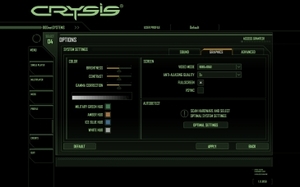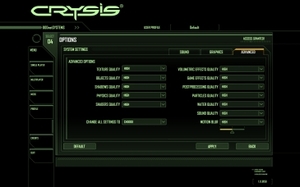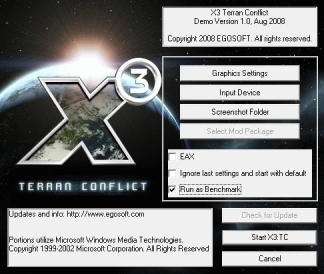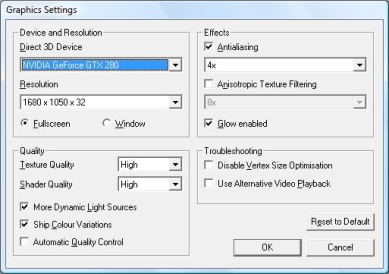Crysis
Publisher: Electronic ArtsWe patch Crysis to v1.21 and run it in DirectX 10 mode with High detail settings. We use 1,280 x 1,024 with 2x AA and no AF to give a reasonably real-world test without the risk that the graphics card will be a limiting factor to CPU performance.
We load a save game in the Relic level and play the game for roughly three minutes, following a strictly defined sequence of actions and movements. We repeat this test three times, or until a reliable set of results is achieved. The consistent results are then averaged to give the figures below.
This is the best way to test how a CPU affects game performance, as the game will be generating AI and physics and game rules for the CPU to perform. A timedemo addresses a CPU in a noticeably different way.
The overclocked 3.8GHz Phenom II X2 550 tops the table, slightly edging out the overclocked E7400, despite the fact the Intel CPU is clocked 400MHz faster. However, the E7400 does have a higher minimum framerate, affording a slightly smoother gameplay. Even when not overclocked, the X2 550 BE is faster than its Intel-based competition, posting a healthy - and very playable - average of 33fps, with a minimum of 25fps. The E7400 has a near identical average (32fps), but the minimum is a choppy 18fps.
X3:Terran Conflict
Publisher: EgoSoftX3: Terran Conflict is the latest space-based trading and fighting game in the X3 series. It uses masses of polygons and geometry to create the complex ships and so is a very stressful test for a CPU.
Remember that it's the CPU that constructs the wire-frame models of game objects, before a GPU can apply texture and lighting.
To run the benchmark, first download the rolling demo and set the graphics options as below. Then remember to tick the 'Run as benchmark' box and hit go. We average the results of the four component tests to give a single minimum and average frame rate.
At stock speeds, the X2 550 BE is again quicker than the pricier E7400 - nearly 10fps faster in fact, with an average of 71.5fps, compared to 62.2fps. When overclocked, the Intel chip puts its faster clock speed to good use, although there's not a lot in it - just 2.4fps between them.

MSI MPG Velox 100R Chassis Review
October 14 2021 | 15:04













Want to comment? Please log in.